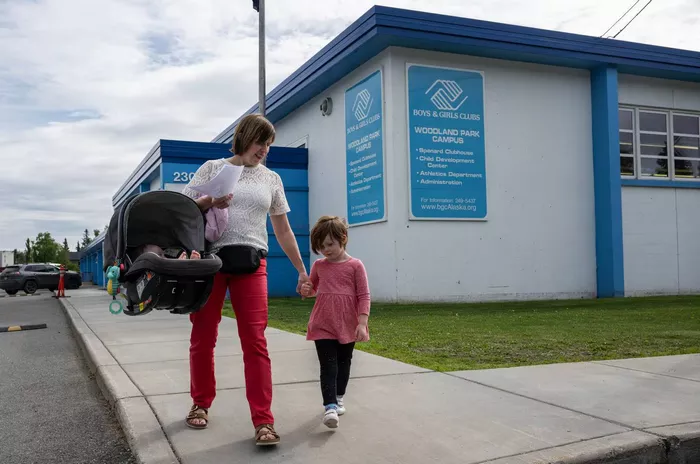In May, Tiffany Hall, a single mother, started dreading morning notifications on her phone. As an executive of a statewide nonprofit, she relied on child care for her 4-year-old and infant to focus on her work. Despite securing a spot at the Woodland Park Boys & Girls Club in Anchorage, Hall faced unexpected closures due to staff shortages.
Hall often received notifications that the facility would limit classroom capacity for the day due to “unexpected staff absences.” Only the first 10 children to arrive could stay, leaving parents, including Hall, scrambling to manage work with children unexpectedly at home.
This issue, more prominent since the COVID-19 pandemic, stems from child care centers struggling with thin staffing. A single staff absence can force centers to close classrooms or cap capacity to maintain state-mandated safety ratios. As a result, parents who endure long waitlists and high costs can’t always use the child care they’ve secured.
By May, the situation worsened. Hall often went to bed unsure if she could send her children to care the next day. She woke them early to arrive at the Boys & Girls Club by its 7:30 a.m. opening, hoping to secure a spot.
One morning in late May, Hall arrived at 7:22 a.m., only to find a crowd of parents and children. Only the first kids in the room could stay, creating a tense atmosphere. Hall captured the scene on a video showing stressed parents and crying babies, posting it on Facebook with the caption, “This is what a child care crisis looks like.”
Other parents shared similar experiences of being turned away due to staff shortages, highlighting the desperation and competition among parents for limited spots.
Susan Anderson, CEO of the Boys & Girls Clubs of Southcentral Alaska, explained that persistent staffing issues and the need to maintain safety ratios contribute to this instability. Despite offering competitive wages, finding and retaining qualified workers remains challenging.
To comply with licensing requirements, Anderson said they sometimes have to consolidate classrooms at short notice, a last resort for the center. Efforts are underway to reopen another classroom by August, and parents are reimbursed for days their children are turned away.
The instability has significant consequences for families. Elena Habib, another parent, had to switch jobs for more flexibility due to similar issues at her child care center. She emphasized the financial impact of missed work hours when the center was closed.
The Boys & Girls Club offers relatively affordable care, with recent rate increases still lower than other providers in Anchorage. However, low wages for child care workers have historically subsidized these lower rates, a model now under strain as workers seek better-paying, less demanding jobs.
Christina Eubanks-Ohana, executive director of Hillcrest Child Development Center, highlighted the difficulty in attracting staff without offering competitive wages. Hillcrest offers flexibility to its workers, which has helped stabilize staffing despite paying lower starting wages than the Boys & Girls Club.
Hall sometimes resorted to a nanny share when her older daughter couldn’t attend the Boys & Girls Club. The ongoing instability led her to advocate for state intervention in subsidizing child care to improve pay for workers without raising costs for families. A state task force is currently developing recommendations to address these challenges.
The spring’s disruptions at the Boys & Girls Club underscore the urgent need for solutions. Hall remains hopeful as discussions for change continue, recognizing the widespread effort to resolve the child care crisis in Alaska.



